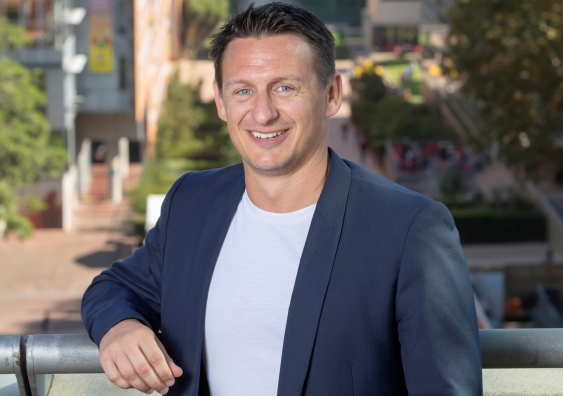University of New South Wales Engineering Associate Professor Brett Hallam has nabbed the 2020 IEEE Stuart R Wenham Young Professional Award, the world’s most prestigious award for young researchers in photovoltaic technology.
Hallam was nominated for the award by Australia’s “Father of Photovoltaics”, UNSW’s Scientia Professor Martin Green. “I nominated Brett for this award because of the significance of his work on hydrogenation of silicon cells,” said Green. “This has helped push UNSW PERC cells to number one position worldwide, now accounting for over 80% of global solar manufacturing capacity.”
The award is named in honour of the late UNSW solar pioneer Stuart Wenham, the man who supervised Hallam’s PhD and helped Hallam on his way to global recognition for his work in hydrogen passivation in silicon solar cells. “It’s a great honour to receive this award in Stuart’s name,” said Hallam. “He gave so much to the photovoltaic industry and was a great mentor and friend to me.”
Hallam is no stranger to awards, back in 2017 he won the State Premier’s Prize for Science and Engineering for his work in boosting the output of solar panels through techniques for manipulating the charge state of atomic hydrogen in silicon to neutralise performance-limiting defects in solar cells.
The nub of Hallam’s work is the increased efficacy of solar cells in order to push the limits of output and affordability. And it is fair to say that Hallam, his colleagues and his predecessors have been extraordinarily successful in this pursuit. Indeed, UNSW has held the world record for silicon solar cell efficiencies for 30 of the last 37 years. This is not even to mention Hallam’s work at Suntech Power, where he was part of the team behind the first p-type Cz silicon solar cells with more than 20% efficiency.
Another aspect of Hallam’s hydrogenation research involves heterojunction (HJT) technology. By incorporating hydrogenation into the manufacture of HJT cells using low-quality silicon Hallam and his team were able to use wafers 40% cheaper whilst maintain a high level of solar cell efficiency.
Only last month, Hallam and his colleague Alison Ciesla authored a piece for pv magazine Australia called “Understanding LeTID”, in which the distinguished researchers discussed the impact of light and elevated temperature-induced degradation of solar cells. “Understanding the impacts of this degradation is key to informed decision making for consumers and manufacturers,” Hallam informed.
Unfortunately, Hallam won’t be able to take the award home as, due to Covid-19 restrictions, he is no doubt already at home. The award was supposed to be handed out at the IEEE Photovoltaics Specialists Conference in Canada this June but will now be presented to Hallam virtually.
This content is protected by copyright and may not be reused. If you want to cooperate with us and would like to reuse some of our content, please contact: editors@pv-magazine.com.









By submitting this form you agree to pv magazine using your data for the purposes of publishing your comment.
Your personal data will only be disclosed or otherwise transmitted to third parties for the purposes of spam filtering or if this is necessary for technical maintenance of the website. Any other transfer to third parties will not take place unless this is justified on the basis of applicable data protection regulations or if pv magazine is legally obliged to do so.
You may revoke this consent at any time with effect for the future, in which case your personal data will be deleted immediately. Otherwise, your data will be deleted if pv magazine has processed your request or the purpose of data storage is fulfilled.
Further information on data privacy can be found in our Data Protection Policy.